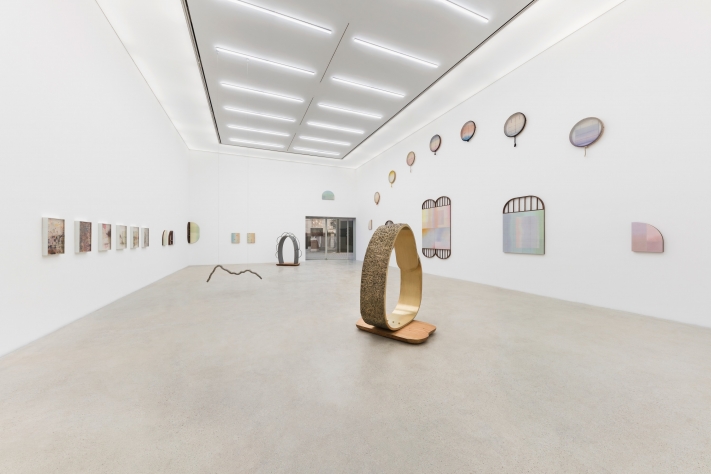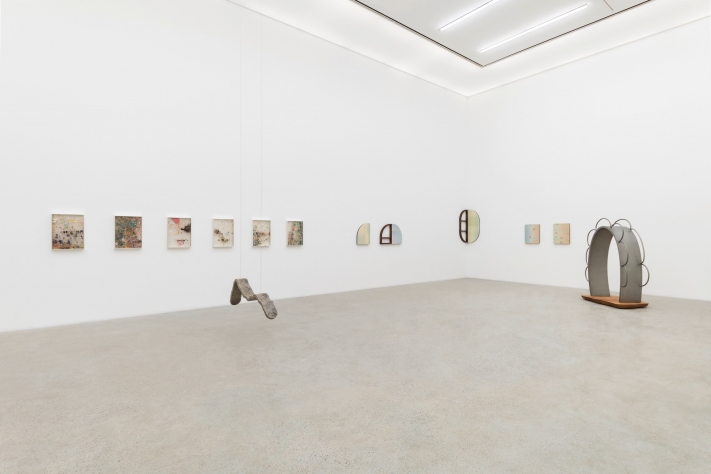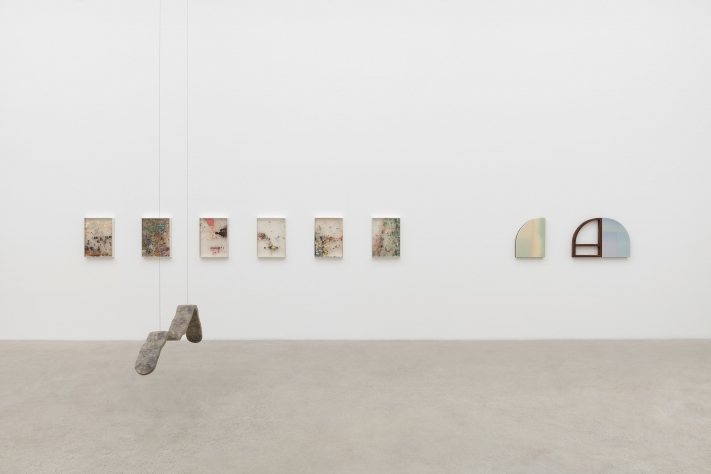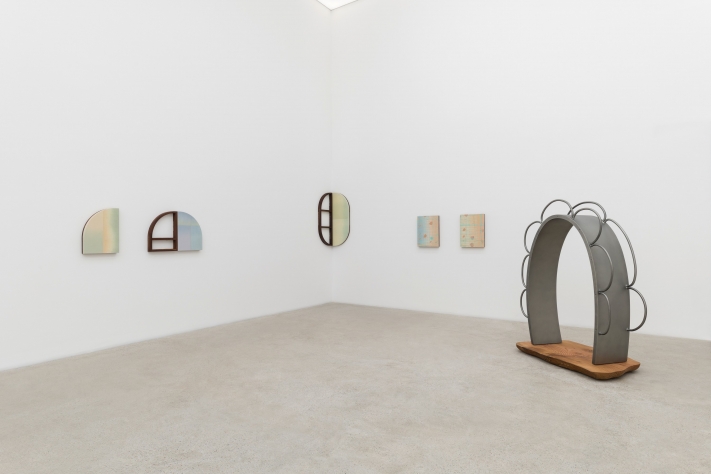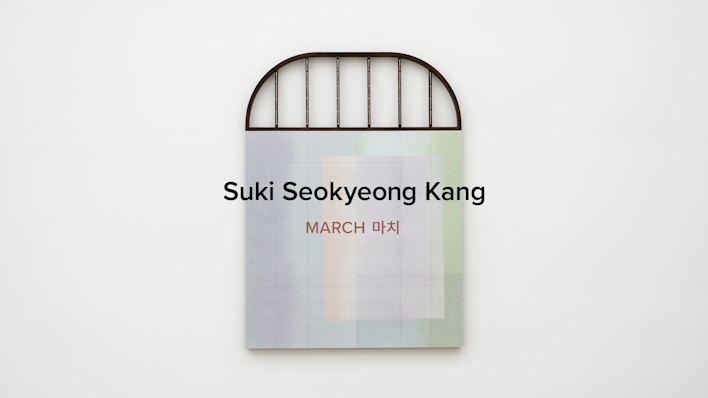Kukje Gallery is pleased to present a solo exhibition of Suki Seokyeong Kang from March 19 to April 28, 2024. Dedicated to conceptualizing and visualizing the minimal piece of land upon which an individual person can stand and ground themselves, Suki Seokyeong Kang is well known for exploring her unique notion of the “grid” and how it shapes our relationship to space. Titled MARCH, Kang’s first exhibition at Kukje Gallery will be installed in K3 in expansion of such themes, linking the advent of spring to rootedness as the artist further takes a step forward to nourishing her own “plot of land.”
Introducing a series of newly produced works, the exhibition evolves around Kang’s core concepts of “Jeong” and “Mora.” The rectangular grid that runs throughout Kang’s work alludes to the historic system of Jeongganbo, a musical score created by King Sejong of Joseon Dynasty in the 15th century. In the musical score, each square of the character Jeong (井, a Chinese character for a well) marks the length and pitch of a note. Forming a fundamental visual system seen throughout her work, Kang translates the square into a temporal space that is adopted as an armature around which to compose her unique mixed media work. It is while working around and within this spatial framework that Kang narrates different layers of time as she alludes to the notion of a well that is rooted deep into the ground, linking not only past ages but community and nourishment. Conceived as a kind of metaphysical score, Kang’s “Jeong” serves as both the physical frame of her diverse paintings and sculptures and an evocation of the body’s relationship to space. In K3, her groups of “Jeong” evoke a stage for her ongoing painterly endeavor to encompass infinite time and space, while formally framing her newly developed paintings of colored silk.
In linguistics, a “Mora” is a timing unit that is equal or shorter than a single syllable. In Kang’s art, a “Mora” refers to a unit of her painting, the visual block of time in which she builds up a narrative. Presented in this exhibition are her newest Mora — Nuha series, perhaps the most literal embodiment of the artist’s interest in portraying the significance of time. Kang paints her canvases while they’re laid flat on a table. The flow of paint running down the four sides of her frames are a well-known signature of her practice, allowing the audience a glimpse into the structure of different layers that come together to form her paintings. With the Mora — Nuha series, the artist provides a glimpse into the scene beyond the canvas in her Nuha studio, portraying the journey of the flow of paint beyond the initial confines of the canvas. The accumulation of paint dripping off the edges of the canvas is here layered with pictorial additions of paper and silk, altogether serving as a portrait of the artist’s time and a poetic monument of the historicity of an individual’s passage of time.
In Hours — one, the Mora painting is housed within a circular wooden frame. The embroidery of rope knots around the frame attest to the hand, recording the labor required to fill the circle and thereby directly evoking the cycle of time, while the translucence of colored silk wrapping the frame poetically alludes to the hours of dawn and dusk.
Also installed throughout the floor and ceiling of K3 are new groups of sculptures. Suspended low from the ceiling is Mountain — hours, cast bronze molded and bent to represent the textures of a mountain, while Mountain — flower with its petal-like frame alludes to the cycle of time as it accentuates the landscape of Spring. In this particular landscape of a new season, the artist invites her viewers to slowly walk among the works to enjoy the faces of each work from different angles and discover their own courage to find comfort in the passage of time.
About the Artist
Born in Seoul, Korea, in 1977, Suki Seokyeong Kang employs painting, installation, video, and choreography in her ever-expanding vocabulary. She not only extracts narratives from her own body and history, but also uses research to explore and reinterpret traditional forms and methodologies from Korean culture, weaving them together into a unique system of formal logic. Kang is particularly interested in contemporary translations of the concept of “true view” as a framework to question the position of an individual in today's society. As her different bodies of work organically evolve and overlap inside her discursive practice, the artist continually engages narrative frames, space, and time to summon past voices through the perspective of the present. In this way her installation and videos present an axis of history around which individual experiences can be oriented and grow.
Suki Seokyeong Kang studied Korean Painting at Ewha Womans University, Seoul, and Painting at the Royal College of Art, London. She is currently a professor of Korean Painting at Ewha Womans University. Recent exhibitions include Suki Seokyeong Kang: Willow Drum Oriole, Leeum Museum of Art, Seoul (2023); Square See Triangle, Buk-Seoul Museum of Art, Seoul (2019); Black Mat Oriole, Institute of Contemporary Art, Philadelphia (2018); Foot and Moon, Audio Visual Pavilion, Seoul (2015); Polite Owl in the Valley 鴟鴞鴟鴞, Gallery Factory, Seoul (2013); GRANDMOTHER TOWER, Old House, Seoul (2013); Venice Biennale (2019); Shanghai Biennale (2018); Liverpool Biennial (2018); Gwangju Biennale (2018, 2016); As the Moon Waxes and Wanes, National Museum of Modern and Contemporary Art, Gwacheon (2016); and Groupe Mobile, Villa Vassilieff, Paris (2016). She was awarded the Baloise Art Prize at Art Basel in 2018.


